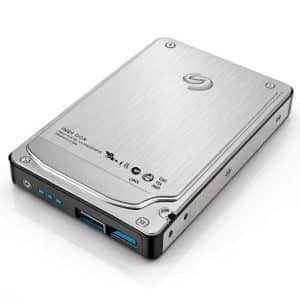
Here are ten fascinating and lesser-known facts about hard disk drives that showcase their remarkable engineering and evolution:
Historical Marvels
- The first commercial hard drive, IBM’s RAMAC 305 from 1956, weighed over a ton and stored just 5 megabytes of data, requiring an entire room to house it. Today’s drives store millions of times more data in a device smaller than a paperback book.
- Hard drives can survive brief periods in space due to their sealed construction, and NASA has successfully used modified consumer HDDs in satellites, though they require special firmware to handle the radiation environment.
Engineering Wonders
- The read/write head of a modern hard drive flies just 3 nanometers above the spinning platter surface—that’s roughly 1/30,000th the width of a human hair. This gap is so small that a single dust particle would be like a boulder in comparison.
- Modern hard drives can withstand over 300 Gs of shock when powered off, but only about 70 Gs when running, due to the delicate positioning required for the floating read/write heads during operation.
Speed and Precision
- The fastest consumer hard drives spin at 15,000 RPM, meaning the outer edge of the platter moves at speeds exceeding 120 mph. Enterprise drives maintain this speed with tolerances measured in micrometers.
- A hard drive’s actuator arm can move from the innermost track to the outermost track in under 10 milliseconds, covering a distance equivalent to about 1,000 track widths with extraordinary precision.
Capacity Innovations
- Shingled Magnetic Recording (SMR) technology overlaps data tracks like roof shingles, increasing storage density by up to 25%, though this requires sophisticated algorithms to manage data writing efficiently.
- Heat-Assisted Magnetic Recording (HAMR) technology uses laser heating to temporarily heat disk areas to over 400°C during writing, enabling data densities that would be impossible at room temperature.
Surprising Durability
- Hard drives generate their own weather systems—air currents inside the sealed chamber help cool components and can create microscopic tornadoes that actually help clean the drive heads.
- Some enterprise hard drives are rated for continuous operation for over 2.5 million hours (about 285 years), though manufacturers typically guarantee them for 5 years under normal data centre workloads, demonstrating the incredible reliability of modern mechanical storage.
These facts highlight how hard drives represent one of the most precise mechanical devices ever mass-produced, combining physics, chemistry, and engineering in ways that continue to push the boundaries of what’s possible with spinning magnetic storage.

